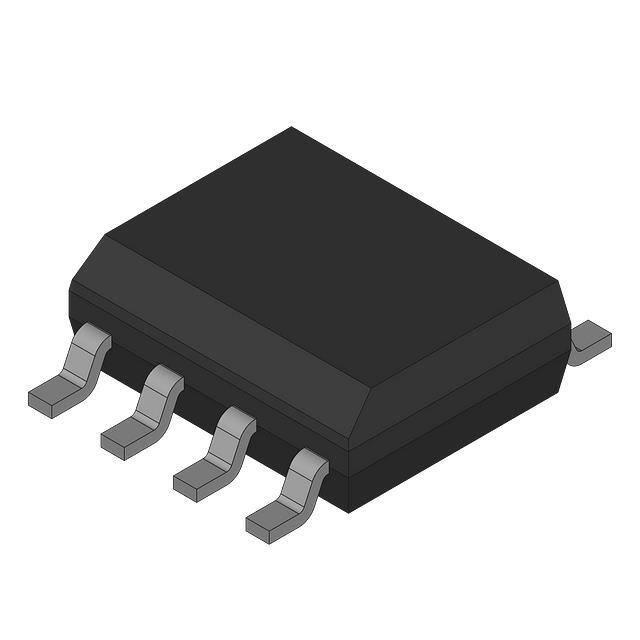What should be paid attention to when using voltage dependent resistor in the circuit
Among resistors, there is a special type, which is Voltage Dependent Resistor. Different from ordinary resistors, Voltage Dependent Resistor is a typical nonlinear resistor device. Its resistance value changes with voltage within a certain current and voltage range. When the voltage across the Voltage Dependent Resistor is lower than the threshold, the current passing through it is almost zero, so it cannot be used as a regular resistor in the circuit design process.
Voltage Dependent Resistor is a type of electronic component often used in surge protection circuits. Others such as TVS tubes, fuses, air switches, TSS tubes, etc. belong to this type of device.It is marked with VR in the circuit. This VR is not VR glasses.

Of course, if you only look at the circuit diagram, you will find that some Voltage Dependent Resistor is not marked with VR, but with MOV. Why is this? This is related to the material of the Voltage Dependent Resistor. The material of the Voltage Dependent Resistor currently used in the market is generally zinc oxide (ZnO) as the main material, and then doped with a variety of other metal oxides. Therefore, some circuit diagrams will use Metal Oxide Varistors to represent the Voltage Dependent Resistor, and this MOV is the abbreviation of this English acronym, so it is no problem to write it as MOV.

Unlike general resistors, the resistance value of the Voltage Dependent Resistor may not change within the range. The main function of the Voltage Dependent Resistor is to perform circuit protection voltage clamping when the circuit has an overvoltage condition, absorb excess current and protect the subsequent circuit.

However, it should be noted that although the Voltage Dependent Resistor can absorb a lot of surge energy, it is also limited. It cannot withstand continuous currents above the milliampere level. This must be considered when the circuit needs to apply the Voltage Dependent Resistor.
So what parameters should be considered when using a Voltage Dependent Resistor?
Varistor voltage
Varistor voltage is the breakdown voltage or threshold voltage. It refers to the DC voltage value at both ends of the Voltage Dependent Resistor when a specified DC current flows through the Voltage Dependent Resistor. In most cases, this value is the voltage value measured when a 1mA DC current flows through the Voltage Dependent Resistor. The general voltage range is between 10 and 9000V. When selecting and using, choose according to the actual situation.
Max allowable operating voltage
The max allowable operating voltage (Max.Allowable Voltage) refers to the effective value of the maximum sinusoidal voltage or DC operating voltage allowed to be continuously applied to the Voltage Dependent Resistor at an ambient temperature of 25 degrees Celsius.

Max clamping voltage
Max clamping voltage (Max.Clamping Voltage) refers to the maximum voltage across the Voltage Dependent Resistor under the standard pulse current waveform (8/20us).
Rated power
Rated power (Rated Power) refers to the maximum allowable average power consumption at an ambient temperature of 25 degrees Celsius
Max tolerable energy
Max tolerable energy (Max.Energy) refers to the maximum energy when the voltage of the Voltage Dependent Resistor fluctuates by ±10%. The test voltage is 10/1000us (10us rise time, 1000us half-peak time), and some test conditions are 8/20us

Surge current
Surge current refers to the maximum current at which the electrical characteristics of the Voltage Dependent Resistor will not decrease when the specified pulse energy waveform (such as 8/20us) is applied.
In addition to considering parameters, what other aspects should be paid attention to?
Selection
Voltage parameter matching: The nominal voltage of the Voltage Dependent Resistor should be higher than the peak voltage that may appear in the actual circuit. Generally speaking, for AC circuits, it can be calculated according to the formula, where is the circuit voltage fluctuation coefficient, is the circuit DC working voltage (effective value in AC), is the varistor voltage error, and is the aging coefficient of the component.
Current capacity consideration: The current capacity of the selected Voltage Dependent Resistor should be greater than the maximum surge current that may appear in the circuit to ensure that when a surge occurs, the Voltage Dependent Resistor can effectively absorb the surge energy without being damaged.
Application scenario adaptation: If it is used for power protection, it is necessary to distinguish whether it is an AC power supply or a DC power supply, and whether it is protection between power lines or between power lines and the earth. Choose a suitable Voltage Dependent Resistor.
Installation
Location selection: It should be installed near the entrance of the circuit, such as the power input terminal, so as to absorb lightning strikes and overvoltages in the first place. At the same time, it should be as close as possible to the protected circuit or component to reduce the impact of overvoltage on it.
Firm connection: Make sure the pins of the Voltage Dependent Resistor are firm and reliable to avoid loosening or falling off during use, otherwise it may cause poor contact, affect its protection effect, and even cause safety hazards such as arcing.
Avoid interference: The Voltage Dependent Resistor should be installed away from heat-generating or flammable components, and it is best to keep a gap greater than 3mm to prevent overheating from affecting its performance or causing safety accidents.
Usage environment
Temperature control: The operating temperature range of the Voltage Dependent Resistor is usually limited. It should be avoided to use it for a long time in a high temperature environment. The operating temperature should be lower than its peak operating temperature.
Humidity and protection: The Voltage Dependent Resistor should avoid working in harsh environments such as high humidity, wind, rain, and water vapor. It should also avoid working in conditions of sand, dust, salt dew, and harmful gases. If necessary, it should be protected with a protective box.
Avoid direct sunlight: Long-term direct sunlight may cause the Voltage Dependent Resistor to increase in temperature, accelerate its aging, and affect its performance. Therefore, it should be avoided in places with direct sunlight such as open air and outdoors.
Maintenance and testing
Regular inspection: Use a multimeter or other tool to regularly check the performance of the Voltage Dependent Resistor to see if its resistance value is within the normal range and if there are any obvious changes or signs of damage.
Replace in time: Once the Voltage Dependent Resistor is found to be aging, damaged, or has degraded performance, it should be replaced in time to ensure the safe operation of the circuit.


